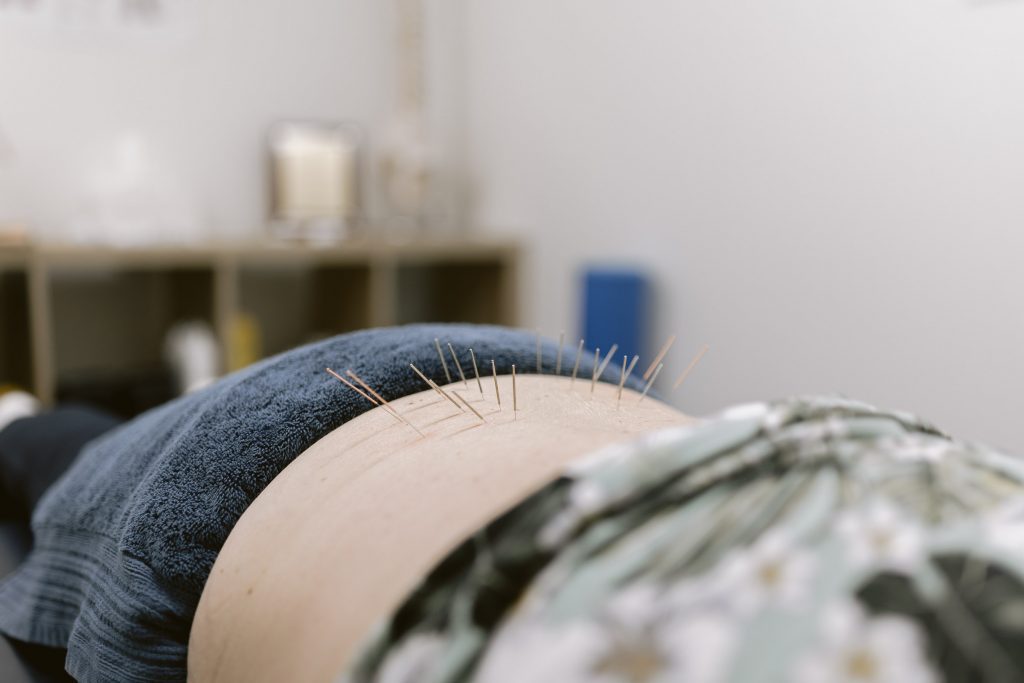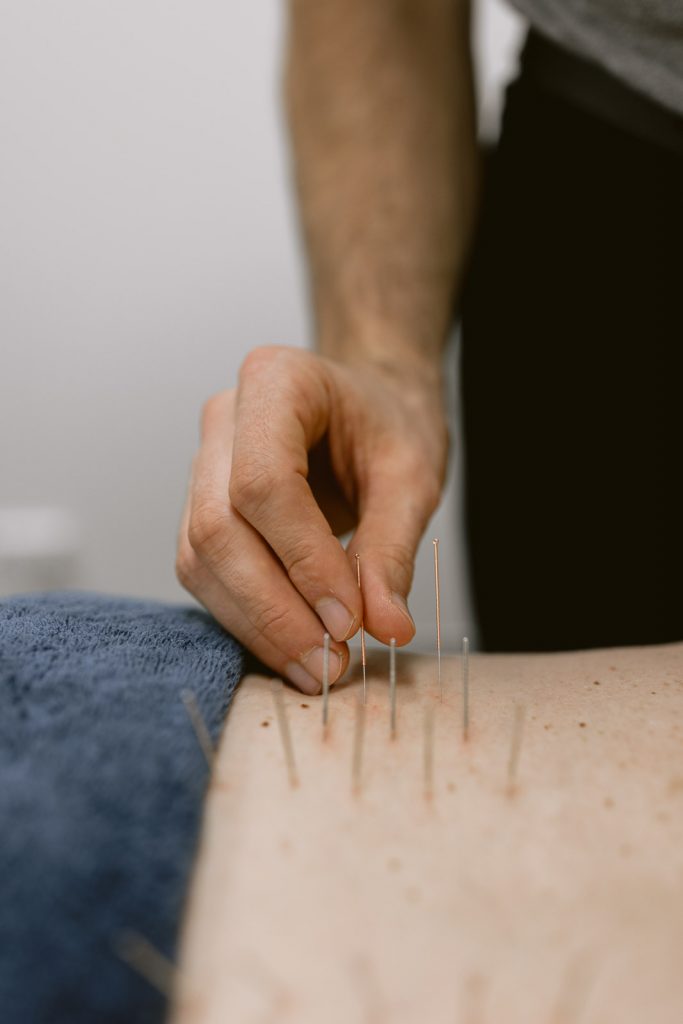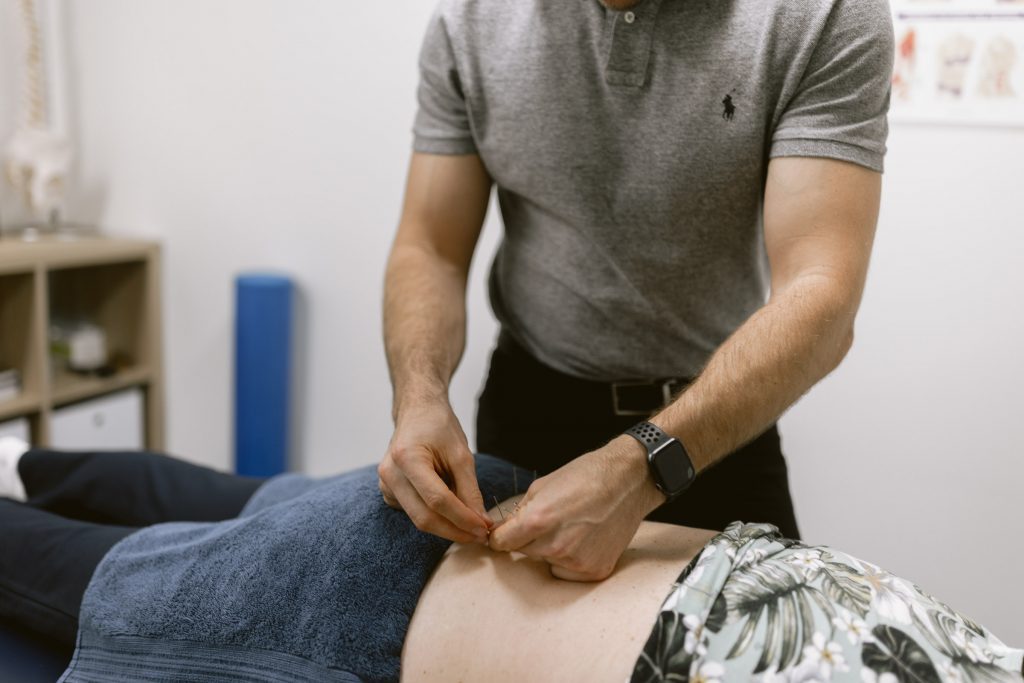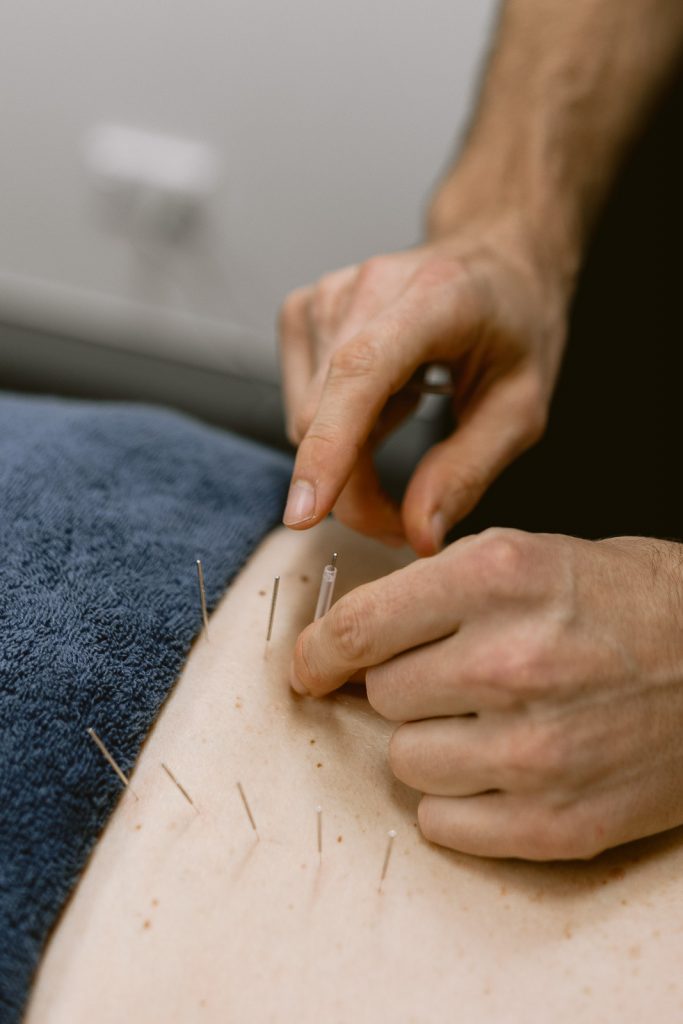
We use dry needling in the treatment of many different musculoskeletal conditions and presentations. Depending on the areas treated and the specific technique of needling used, dry needling can help;
At Impulse Chiropractic, dry needling is often used in conjunction with other treatment and rehab methods to help achieve the best result for the patient.

Dry needling is a minimally invasive procedure in which a thin filiform needle is directly inserted into an active myofascial trigger point (MTrP), with the aim of eliciting a local twitch response in the muscle tissue. Myofascial trigger points (MTrP’s) are palpable and hyperirritable nodules located in the taut band of skeletal muscles. It is often referred to in laymen’s terms as a “knot”. These trigger points when active can cause pain, as well as reducing movement and functional capacity.
There are many different causes of a trigger point, some of which include:
The process of inserting the needle into the tissue is thought to stimulate the local and central nervous system to release a cascade of chemicals locally and throughout the body. This initiates a healing process which helps moderate chemical imbalances, changes local blood circulation, and changes nerve pathways.
This typically results in immediate positive changes such as reduced pain, increased range of motion, increased muscle activation and reduced inflammation. Positive long-term effects may be seen after 2-3 sessions. After treatment, you may experience some soreness and minor bruising on the same day. Ice application to the area where the needles where inserted can help to manage this.


We are often asked at the clinic, “Is dry needling the same as acupuncture?” Or “what is the difference between dry needling and acupuncture?” The simple answer is, No, they are not the same, but they have a number of similarities.
The fundamental difference between the two techniques is the theory and clinical reasoning behind how and why it works.
Dry needling is derived from Western medicine and its anatomical and neurophysiological principles.
Acupuncture predominantly follows Traditional Chinese Medicine (TCM) theory. It is based on the belief that health is determined by a balanced flow, the vital life energy present in all living organisms. According to acupuncture theory, chi circulates in the body along twelve major pathways, called meridians, each linked to specific internal organs and organ systems. The insertion of the needles at these specific points along the meridians is thought to redirect the flow of energy to help with pain and other ailments.
There are also some differences in the way patients are assessed before treatment. Prior to dry needling treatment, patients are assessed through palpation, range of motion, dermatomes, myotomes, and a twitch response. Assessment prior to acupuncture typically involves, meridians, yin and yang pulse, tongue diagnosis, acupoints and no twitch response.
We use a variety of treatment options to help you get back to your best!
15/64 Pitt Rd, North Curl Curl
NSW 2099
(02) 9939 8817
admin@impulsechiropractic.com.au
Monday to Friday
8am–6:30pm
Saturday
8am–12pm
Please don’t hesitate to contact us or call if you have any questions that need answering.